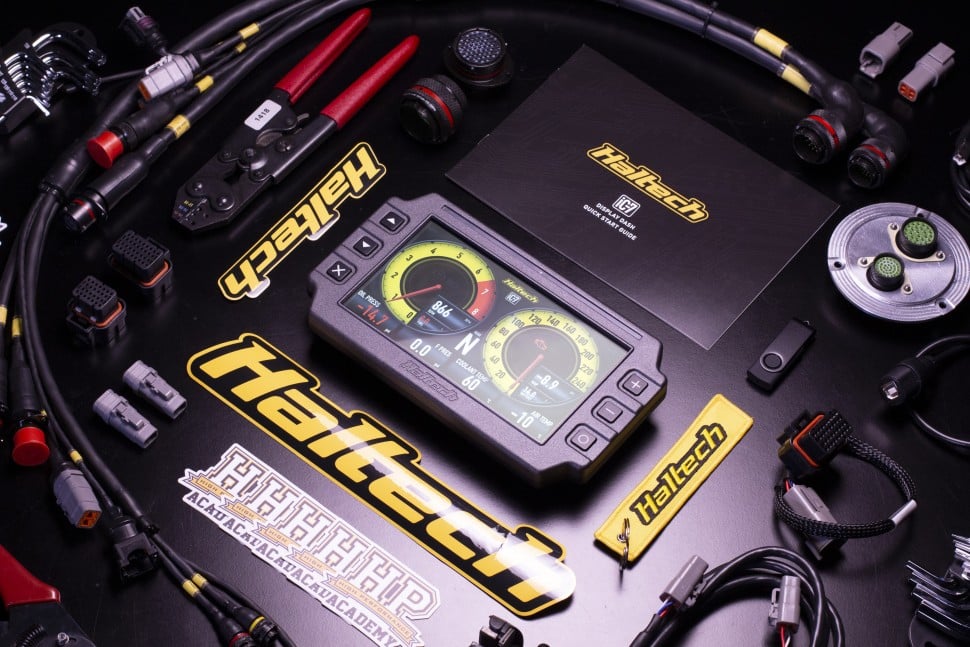| 00:00 |
Having discussed what causes downforce, it's time to do the same with drag.
|
| 00:04 |
As we covered in the previous module, angling a flat plate and applying a pressure differential on it will inherently create a rearwards facing force vector, and this is what is known as pressure drag.
|
| 00:16 |
This is drag that results from any pressure differential on a surface with a rearwards facing normal vector.
|
| 00:22 |
This could be drag from suction induced on rearwards facing parts of a wing, or pressure on the forwards facing nose of the car.
|
| 00:30 |
At the rear in the car's wake there's usually a lower than ambient pressure, and this will cause the rearwards facing portions of the car around the boot to have a substantial amount of pressure drag.
|
| 00:42 |
On a road going car, the high pressure region at the front and the low pressure region at the back are the two most dominant sources of pressure drag.
|
| 00:50 |
There is however another component which is known as skin friction drag.
|
| 00:55 |
Essentially, this drag comes from the formation of the boundary layer and the wall friction that results from it.
|
| 01:01 |
When the boundary layer is formed, there's a shearing action between the wall and freestream particles, and this shearing generates a force that's applied at the wall, which is along the direction of travel of the flow.
|
| 01:12 |
The magnitude of the shear force at the wall is proportional to the steepness of the velocity gradient in the boundary layer, and the speed of the fluid squared.
|
| 01:21 |
At lower Reynolds numbers, the boundary layer is more likely to be laminar, and this results in a fairly gentle velocity gradient.
|
| 01:29 |
As a result, laminar boundary layers have less skin friction drag.
|
| 01:34 |
Turbulent boundary layers have more mixing and a steeper velocity gradient, so we'd expect more skin friction drag with these.
|
| 01:41 |
Generally speaking, this means that to reduce skin friction drag, we want as smooth a surface as possible, as decreasing the surface roughness decreases the production of instabilities within the boundary layer, and so delays the onset of the turbulent boundary.
|
| 01:56 |
Cars that generate lots of downforce typically have their drag dominated by the pressure drag component.
|
| 02:02 |
Any suction on any rearwards facing surface will cause drag, and when we increase downforce with things like wings and diffusers, we are inherently generating this rearwards facing suction.
|
| 02:12 |
In these cases, we don't care so much about skin friction drag, as it's a comparatively small component.
|
| 02:19 |
Skin friction is far more critical on lower drag cars like solar record cars, due to their very large surface area, and comparatively lower amounts of downforce and lift.
|
| 02:29 |
These large, flat, horizontal surfaces produce very small pressure differentials, but at all points, the surface is exposed to the airstream, and it will experience skin friction drag.
|
| 02:42 |
This makes situations like teardrop car shapes tricky.
|
| 02:45 |
We can teardrop shape a car more with a longer tail that reduces the pressure drag.
|
| 02:50 |
However, we've added so much surface area that the skin friction drag is notably increased.
|
| 02:56 |
Ideal balance for these two components of drag lies depends completely on the specifics of the car being designed, and there is no ideal rule to follow here.
|
| 03:04 |
Everything must be assessed on a case-by-case basis.
|
| 03:07 |
Let's finish up this module by looking at the main takeaways.
|
| 03:11 |
Drag consists of two main components, pressure drag and skin friction drag.
|
| 03:16 |
Pressure drag arises from pressure differentials on rearwards facing surfaces, such as the suction on a rear wing or low pressure regions in a car's wake.
|
| 03:26 |
Skin friction drag, on the other hand, comes from shearing forces within the boundary layer, with smoother surfaces and laminar boundary layers reducing drag whereas turbulent boundary layers increase it.
|
| 03:38 |
For high downforce cars, pressure drag dominates, while for low drag designs such as solar cars, skin friction drag plays a larger role.
|





